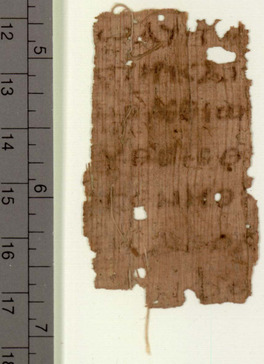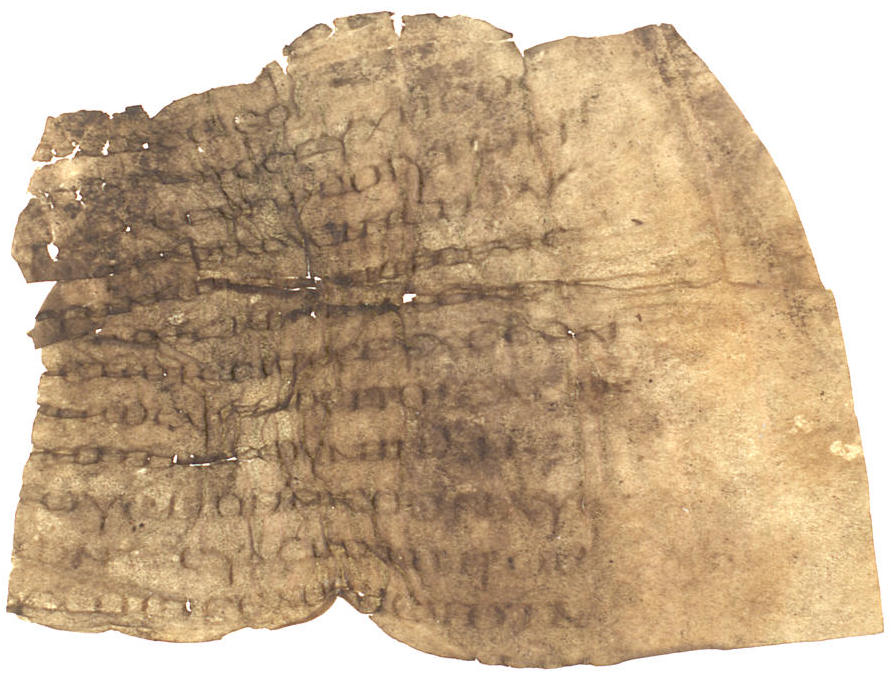"This fragment of the Gospel according to Matthew, containing most of the Lord's prayer and four verses of the introduction, is written on a badly damaged parchment codex leaf. The damage may be due to water, or exposure to extreme heat, or both; whatever the case, it is badly wrinkled, smudged, worn through in spots and very faded. Many letters are lost in whole or in part, while others may be seen only by patient examination under magnification. Text is missing both at top and bottom, and the left edge of the recto is ragged, possibly from the page's having been torn out. The circumstances of its separation from the codex are mysterious; if it was torn out to be kept as a charm or used for recitation, whoever did so was careless and lost the portion of the prayer" (Teeter, Columbia Papyri, p. 3).
Here is an image of the recto of P.Col. XI 293:
 P.Oxy. 4406; P105 (verso)
P.Oxy. 4406; P105 (verso) The question of why P.Oxy. 4406 made the official list of New Testament manuscripts while P.Col. XI 293 did not is a testament to the current uncertainty concerning the role of non-continuous manuscripts within the discipline of New Testament textual criticism. But if we are going to be consistent in our standards and criteria, then P.Col. XI 293 deserves a place among the official list of New Testament manuscripts and I would like publicly to request that the Institut für Neutestamentliche Textforschung (INTF) consider adding it to the Liste. Whether or not it is to be cited in the apparatus criticus of the NA28 or the ECM is another question altogether, but it should at least be given a Gregory-Aland number. The text is genealogically significant, agreeing "in all major respects with the 27th edition of N(estle)-A(land), as well as the Codex Sinaiticus (א) and the Codex Vatianus (B)" (Teeter, Columbia Papyri, 4-5).
I'm interested to hear what you think so let's take a vote! Please vote below and in a week or two I will post the results and follow up on the discussion. You are also free to leave comments if you are unsure, but please explain why.

